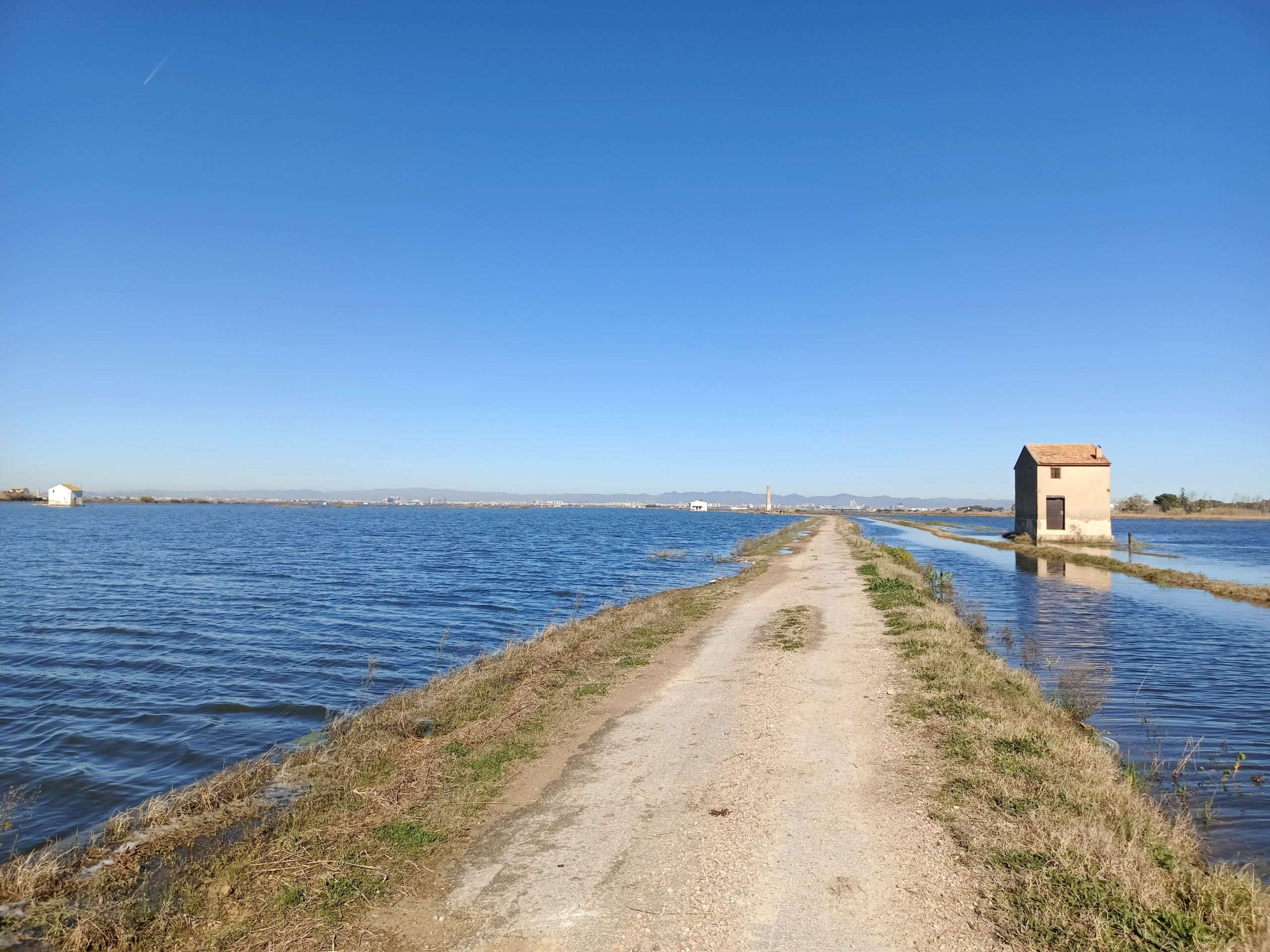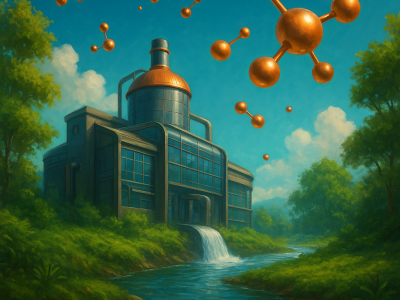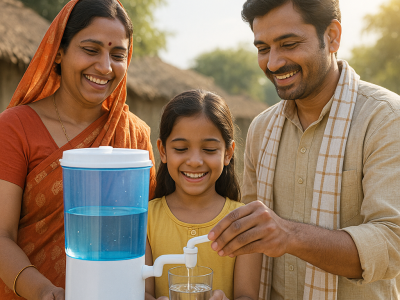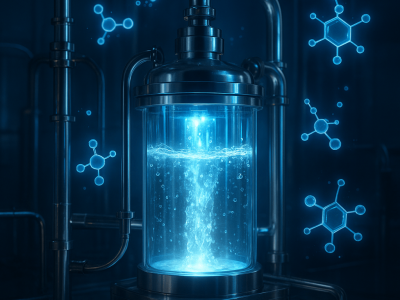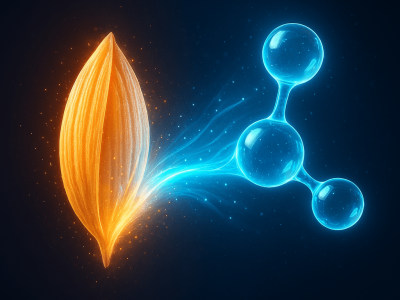Rivers and lakes across Europe are under pressure from a silent intruder: pharmaceuticals. Designed to heal, medicines such as antibiotics, beta-blockers and painkillers are now polluting aquatic ecosystems, slipping through wastewater treatment plants and finding their way into natural waters. For years, environmental scientists have warned that the consequences could be devastating. Now, new research led by Adele Balseviciute, a PhD candidate at the Polytechnic University of València, offers a glimpse of hope. Her team is testing an innovative approach known as electrochemical oxidation, where electricity itself is used to break down stubborn drugs that linger in wastewater.
Published in Separation and Purification Technology, the study explores how this high-powered process could bring Europe closer to meeting ambitious new water quality targets. At its core lies a fascinating material: boron-doped diamond. Far from jewellery, this cutting-edge substance may be one of the most powerful tools available for stripping pharmaceuticals out of contaminated water.
The invisible threat in our waters
When patients take medicines, not all of the active compounds are absorbed by the body. The remainder passes through into sewage systems. Similarly, pharmaceutical factories discharge their waste into rivers and streams. What seems like a negligible amount builds up over time. The result is a chemical cocktail of antibiotics, anti-inflammatories and heart medications circulating through water bodies.
According to the European Environment Agency, less than one-third of surface waters across the European Union currently achieve a good chemical status. Pharmaceutical pollution is a major reason for this poor performance. And the problem extends far beyond environmental aesthetics. Antibiotics in particular present an acute threat by fuelling antimicrobial resistance, or AMR. When bacteria are constantly exposed to traces of these drugs, they evolve ways to survive. Formerly reliable treatments are rendered useless.
The World Health Organization reported that antimicrobial resistance was linked to as many as 4.71 million deaths in 2021. That stark figure has made AMR one of the most pressing global health crises of the twenty-first century. As drug resistance rises, the burden on healthcare systems grows heavier, jeopardising everything from routine surgery to cancer treatment.
Policy momentum in Europe
Recognising the urgency, Brussels has begun taking stronger measures. The new Directive (EU) 2024/3019 introduced binding requirements for wastewater treatment plants to remove pharmaceuticals more effectively. For the first time, the European Union has set concrete targets for pharmaceutical removal, reflecting a broader commitment to tackling antimicrobial resistance and safeguarding water security.
This legislative push is also aligned with Europe’s Green Deal ambitions. Clean water is not only essential for ecosystems but also for agricultural productivity, industry and human well-being. The Directive creates both a challenge and an opportunity for scientists and engineers: to design technologies capable of removing complex pharmaceutical mixtures at scale without imposing unsustainable costs.
What is electrochemical oxidation?
Electrochemical oxidation sounds like something out of a science fiction novel. The principle is surprisingly straightforward. By applying electricity to water through special electrodes, researchers generate powerful radicals. These highly reactive molecules attack organic contaminants indiscriminately, breaking them down into smaller, less harmful compounds.
The Valencia team focused on three widely used pharmaceuticals: norfloxacin, an antibiotic; atenolol, a beta-blocker prescribed for heart conditions; and ibuprofen, one of the world’s most common painkillers. All three are representative of the diversity of drugs now found in aquatic environments.
At the centre of the experiments is boron-doped diamond, a synthetic material that offers unique electrochemical properties. Unlike ordinary electrodes, boron-doped diamond is capable of sustaining oxidation reactions fast, generating hydroxyl radicals that relentlessly degrade pharmaceuticals. To put it simply, this material functions like an ultra-efficient catalyst for water purification.
What the experiments revealed
The first step was to understand how the material behaves in controlled conditions. Early tests were promising. Pharmaceuticals degraded efficiently when exposed to electrochemical oxidation. But the team wanted to dig deeper. How fast could these drugs be broken down? What by-products were produced along the way? And how much energy would the process consume?
One clear trend emerged: the more electricity supplied, the faster the removal of pharmaceuticals. At higher currents, norfloxacin, atenolol and ibuprofen rapidly degraded into smaller molecules. Over time, these fragments mineralised into harmless compounds such as carbon dioxide and water.
Interestingly, the process behaved consistently regardless of whether the initial pollutant concentration was low or high. This suggests that electrochemical oxidation could perform robustly across different types of wastewater. Another observation was that higher concentrations of pharmaceuticals increased the efficiency of removal for the same amount of electricity. Essentially, the more pollutants present, the more of them reached the electrode surface, where the crucial reactions occurred.
The energy dilemma
Although the study focused on refinery areas in India, the findings resonate far beyond South Asia. Similar patterns of industrial contamination occur in oil-producing regions across Africa, South America, and parts of the Middle East. The research is therefore not merely a local case study but a contribution to a global dialogue on sustainable wastewater management.
Food security is one of the most pressing global challenges. If agricultural lands continue to be irrigated with polluted water, the consequences will reverberate across markets, public health systems, and international supply chains. Addressing refinery wastewater pollution is thus not only an environmental necessity but also an economic and geopolitical priority.
Bacteria become resistant because they have become used to antibiotics, so now, it is our duty to remove pharmaceuticals from wastewater. Doing it with electricity is a powerful and smart way, and even more if we do it at emission sources!
-Dr. Manuel César Martí
Broader implications for antimicrobial resistance
Why does this matter? Because unchecked pharmaceutical pollution creates the conditions in which antimicrobial resistance thrives. Trace antibiotics in rivers and lakes apply a constant evolutionary pressure on bacteria, encouraging the development of resistant strains. These microbes can spread through communities, farms and hospitals.
The fight against AMR is not limited to hospitals or doctors prescribing antibiotics more responsibly. It is also a question of environmental management. Removing antibiotics from wastewater before they reach rivers is one of the most direct ways to interrupt the chain of resistance. In that sense, electrochemical oxidation could play a key role in public health.
Connecting to global debates
The findings from Valencia arrive at a critical moment in international discussions about water security and antimicrobial resistance. In December 2026, the United Nations will host a high-level meeting on global water resilience. Pharmaceutical pollution is expected to feature prominently on the agenda. Meanwhile, countries in Asia and Africa are grappling with rising cases of drug-resistant infections linked to poor wastewater management near pharmaceutical factories.
This research therefore positions Europe not only as a regulatory leader but also as a potential technology pioneer. By refining electrochemical oxidation, European universities could export solutions to regions where pharmaceutical pollution is most acute. That would be a tangible contribution to global health.
What comes next
The study also hints at exciting new directions. The team at Valencia is now testing ceramic materials with photoactive properties. These can use not only electricity but also sunlight to degrade pharmaceuticals. The addition of solar energy could reduce the process’s energy footprint and make it more sustainable. Moreover, the researchers are expanding their focus to investigate degradation of microplastics, another emerging contaminant of global concern.
If successful, such hybrid systems could address multiple pollutants simultaneously. Hospitals, municipalities and even industrial sites could one day adopt these processes as part of standard wastewater treatment. For policymakers, this kind of research demonstrates that stringent directives can inspire technical innovation rather than stifle it.
The real question is whether societies are willing to invest in these solutions. Will governments provide the funding to implement advanced technologies? Will industries take responsibility for their pharmaceutical waste? And will citizens demand stronger action on water quality?
The answers will determine not only the state of Europe’s rivers but also the trajectory of global public health in the decades ahead.
Reference
Balseviciute, A., Patiño-Cantero, I., Carrillo-Abad, J., Giner-Sanz, J. J., García-Gabaldón, M., Pérez-Herranz, V., & Martí-Calatayud, M. C. (2025). Degradation of multicomponent pharmaceutical mixtures by electrochemical oxidation: Insights about the process evolution at varying applied currents and concentrations of organics and supporting electrolyte. Separation and Purification Technology, 362, 131697. https://doi.org/10.1016/j.seppur.2025.131697

